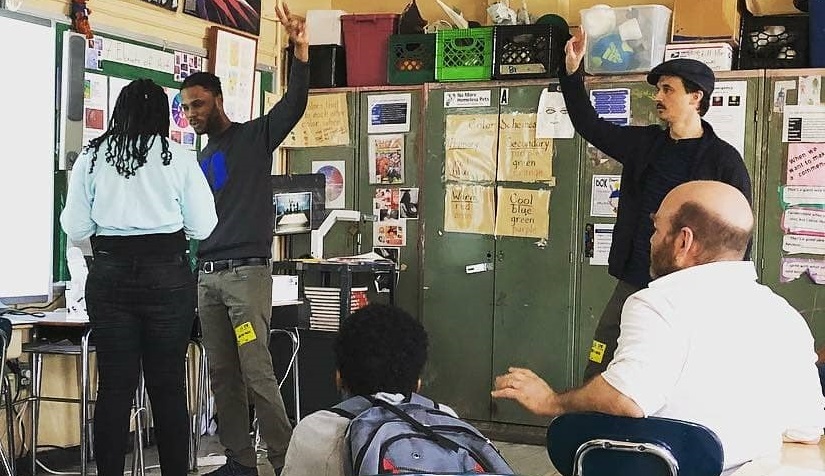Grades: 6–8
Genre: Poetry
Themes: Race, Identity, and Stereotype
Download: Who Am I? Exploring Stereotypes and Identity through Poetry
LESSON PLAN
Warm-Up (5 minutes):
Define the Quote: Distribute Audre Lorde quote on index cards. Have students turn to those nearest them to discuss the quote:
If I didn’t define myself for myself, I would be crunched into other people’s fantasies for me and eaten alive. —Audre Lorde (February 18, 1934–November 17, 1992)
Large Group Discussion: What do you think the quote means? Who is the audience? What is the significance?
Define Stereotypes and Bias (20 minutes):
Ask students to discuss the following questions:
- What is a stereotype?
- How can stereotypes be harmful?
- What role can and does advertising play in perpetuating or combating damaging stereotypes?
Explain that a stereotype is an assumption or belief about an entire group of people. Ask students to share examples of stereotypes they are aware of. Make sure students understand that acknowledging the existence of a stereotype is not the same as saying you believe the stereotype to be true.
Show the video about the Dove ad campaign to the class. Ask students: Have there been any controversial ads that deal with stereotypes when it comes to race, ethnicity, religion, gender, or nationality? Encourage students to write down their answers using the Stereotypes & Bias Worksheet.
Have students discuss these questions and their answers in small groups. Circulate and make note of their responses. Each group of students should discuss the stereotypes contradicted or perpetuated in the Dove video, advertising, social media, music, and day-to-day life.
Identity & Biographical Poem (20 minutes):
Ask students: How do you identify? What are some different ways in which we might identify or express ourselves (e.g., race, sex, age, grade, team, etc.)? Encourage students to write down their answers using the Identity Worksheet.
Example statement: Identity is something that is developed over time. Your identity is shaped by your family, culture, experiences, beliefs, interests, hopes, dreams. It is more than the way you feel, how you act, and what you think and say. With the prompts below think about what makes you, YOU!
- Adjectives that you would use to describe yourself
- Relationships in your life (e.g., friend, brother, daughter)
- Things you love
- Important memories or moments
- Fears, hopes, or wishes
- Heroes, beliefs, and special sayings or words
Ask students to use descriptions from the Identify Worksheet and class discussion on stereotype and identity to write poems that describe themselves.
Example Poem:
Javan “Jay” Howard
Lover of words in rhythm, bittersweet chocolate covered thoughts
That hates melted dreams left unknown too long in the palms of hands
Who wants to challenge the imagination & minds of others
Who fears not finding the right word to express myself
Dreams of watching the world change (or the Knicks win)
Determined to be full of memories, collected
because life is what you make it.
Closing Ritual (1 minute):
I Have a Voice: We will do it three times, the first in our normal voices, the next in our loud lion voices, last in our quiet as a mouse voice.
Repeat after me, three times:
I have a voice,
My voice is powerful,
My voice can change the world
Materials:
- Audre Lorde quote written on index cards
- Dove ad campaign controversy
- Stereotypes & Bias Worksheet
- Identity Worksheet
Learn more about Javan Howard here.
Javan Howard is a poet and writer from the Bronx, NY. He is a Teaching Artist Project Lead Mentor, and a Teaching Aritst for Community-Word Project. Jay believes that the lived experience is the ultimate teaching tool and uses poetry as a social forum to foster discourse about love, culture, and identity. He has facilitated workshops with The New York State Office of Children and Family Services, Voices UnBroken, Community-Word Project, Teachers & Writers Collaborative, and Wingspan Arts.


